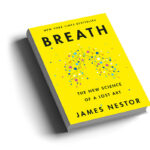Now Reading: Exploring the Profound Connection Between Language and Thought: How Words Shape Our World
-
01
Exploring the Profound Connection Between Language and Thought: How Words Shape Our World
- Home
- Health & Wellbeing
- Exploring the Profound Connection Between Language and Thought: How Words Shape Our World
Exploring the Profound Connection Between Language and Thought: How Words Shape Our World
BooshkaHealth & Wellbeing11 months ago432 Views

The Profound Connection Between Language and Thought
Language is the lifeblood of human connection and understanding, yet its relationship with thought is both intricate and deeply fascinating. Imagine, for a moment, a world without language. If we had never learned to speak, the very fabric of our thoughts would be entirely different. Language provides the framework for our inner dialogue, shaping not just how we communicate but also how we think, perceive, and understand the world around us.
The Role of Language in Shaping Thought
Language is a tool that influences the way we conceptualize and interpret our experiences. Without language, our thoughts would likely be rooted in intuition, expressed through sounds, gestures, and body language. While non-verbal communication can convey emotions and intentions, it lacks the precision and depth that language provides.
Would we be as advanced as we are today without language? Likely not. Language enables complex reasoning, abstract thought, and collaboration. These abilities have propelled humanity forward, allowing us to share knowledge, innovate, and build societies. Each word carries meaning, and the sounds of these words resonate with specific frequencies, further influencing how we perceive and process them.
The Unique Frequencies of Language
Every language has its own set of vowels, consonants, and rhythms, each contributing to its unique frequency. These frequencies do more than distinguish one language from another; they also affect the way we think and feel. The tonal quality of a language, its cadence, and its rhythm can evoke different emotions and reactions. For example, some languages are perceived as soft and melodic, while others are considered sharp or commanding.
These differences suggest that language frequencies play a significant role not only in communication but also in cognition. From a young age, the language we learn begins to shape our neural pathways. Words, phrases, and stories taught to us in childhood influence our feelings, thoughts, and behavioral patterns as adults. This early exposure to language and its frequencies may leave a lasting imprint on how we perceive and interact with the world.
Vocabulary and the Diversity of Thought
The breadth of one’s vocabulary and exposure to multiple languages can greatly influence the complexity and diversity of thought. A person fluent in several languages may possess a richer palette for expressing ideas and emotions compared to someone with a limited vocabulary in a single language. Multilingual individuals often report that certain ideas or emotions are easier to articulate in one language than another, highlighting how language shapes not just expression but also cognition.
Expanding one’s vocabulary or learning a new language can enhance the quality of thought. New words open doors to new concepts, while additional languages provide alternative frameworks for understanding the world. This cognitive flexibility can lead to greater creativity, problem-solving abilities, and emotional depth.
The Influence of Language on Identity and Self-Perception
Many people equate their sense of self with their thoughts. However, if thoughts are shaped by language, and language is a learned construct, then our thoughts are not entirely innate. Instead, they are influenced by the linguistic framework taught to us. This realization challenges the notion that we are our thoughts and suggests that our identity is more fluid and multifaceted than we might assume.
Without language, thoughts might take the form of raw sensations or emotions, unshaped by words or syntax. This raises profound questions about the nature of self-awareness and communication in a pre-linguistic or non-linguistic state.
The Power of Language Frequencies
Beyond its semantic content, language affects us through its sound and frequency. The tones and vibrations of speech can soothe, excite, or even heal. Certain languages or accents may resonate more harmoniously with individuals, influencing mood and perception. These subtle effects underscore the deep connection between sound, language, and human consciousness.
Conclusion: Language as a Gateway to Thought
Language is more than a means of communication; it is a lens through which we view the world. It shapes our thoughts, influences our emotions, and constructs our reality. By expanding our linguistic horizons—whether through vocabulary building or learning new languages—we can enhance our ability to think, feel, and connect.
Understanding the profound interplay between language and thought invites us to reflect on how we use words and how they, in turn, shape our lives. It is a reminder of the incredible power of language to not only describe our experiences but also to define them. Ultimately, language is both a tool and a gift, one that allows us to navigate the complexities of existence with clarity, depth, and purpose.
Becoming the Observer: Transcending Thoughts and Language
Language is the vehicle of thought, a tool we use to express our emotions and feelings. Yet, if we examine its role more deeply, we uncover a profound truth: our thoughts, shaped by language, are not who we are. Once we recognize this, we can step into a new paradigm of awareness—becoming the observer of our thoughts rather than identifying with them.
Language and the Formation of Thought
From the moment we are born, language becomes the lens through which we view the world. Words carry meaning, emotions, and cultural context, shaping the way we interpret our experiences. These learned constructs form our inner dialogue, influencing our beliefs, decisions, and self-perception.
However, language is not inherent to our being; it is taught. The thoughts we experience are, therefore, shaped by the structure and vocabulary of the language we have learned. This realization opens the door to the possibility that our thoughts are not intrinsic to who we are but rather reflections of the linguistic and emotional frameworks we have internalized.
Separating Thought from Self
When we see thoughts for what they truly are—expressions of feelings and emotions translated into language—we begin to disassociate from them. Thoughts are not the core of our identity but a byproduct of our experiences, upbringing, and cultural conditioning. By stepping back and observing our thoughts, we can break free from the automatic patterns they create.
Imagine a stream flowing gently. Each thought is like a leaf carried downstream. Instead of being swept away by the current, we can stand on the riverbank and simply watch. This shift from thinker to observer transforms our relationship with our mind, enabling us to engage with thoughts without becoming entangled in them.
The Practice of Observation
Becoming the observer requires practice and mindfulness. Here are steps to help cultivate this awareness:
-
Pause and Reflect: When a thought arises, pause for a moment. Ask yourself, “Where is this thought coming from? Is it rooted in language, emotion, or a past experience?”
-
Label Thoughts: Identify the nature of the thought. Is it a worry, a judgment, or a memory? By labeling it, you create a space between yourself and the thought.
-
Notice Patterns: Over time, you’ll recognize recurring patterns in your thinking. These patterns often reveal the underlying emotions and beliefs driving them.
-
Practice Non-Attachment: Let thoughts pass without clinging to them or pushing them away. Acknowledge their presence and allow them to fade naturally.
-
Cultivate Present-Moment Awareness: Focus on the here and now. When your attention is grounded in the present, thoughts lose their grip on you.
Language as a Tool, Not a Master
While language shapes our thoughts, it does not define us. By viewing language as a tool rather than a master, we reclaim our power. Words and thoughts become instruments we use intentionally rather than forces that control us. This shift fosters a sense of inner freedom and clarity.
Emotions Beyond Words
Another layer to this understanding is the realization that emotions often precede language. Before a feeling is articulated as a thought, it exists as a raw, visceral experience. By tuning into these pre-linguistic sensations, we can connect with the pure essence of our emotions, unfiltered by the constructs of language.
For example, instead of thinking, “I feel anxious because I have a meeting,” observe the sensation of anxiety—the tightness in the chest, the quickened heartbeat. By doing so, you experience the emotion directly, without the narrative created by thought.
The Observer’s Perspective
When you become the observer, you shift your identity from the mind to the awareness behind it. This perspective allows you to:
-
Respond Rather Than React: Observing thoughts creates a pause between stimulus and response, empowering you to act with intention.
-
Break Free from Negative Cycles: By not identifying with negative thoughts, you can disrupt cycles of worry, fear, and self-criticism.
-
Access Inner Peace: As the observer, you tap into a sense of calm that exists beyond the fluctuations of the mind.
The Path to True Self-Awareness
Recognizing that we are not our thoughts is a liberating realization. It invites us to explore a deeper sense of self—one that is rooted in awareness, presence, and connection. By transcending the mind’s chatter, we align with our true essence, a state of being that is boundless and serene.
This journey of becoming the observer is not about suppressing thoughts but understanding their nature. It is about seeing the mind as a tool to navigate the world while remembering that our true identity lies beyond it. In this space of observation, we find freedom, clarity, and the profound realization that we are more than the words and narratives that shape our inner dialogue.
- balanced life
- Blog
- body positivity
- emotional wellbeing
- exercise
- fitness
- Health
- healthy lifestyle
- holistic health
- intrusive thoughts
- language
- mental clarity
- mental health
- mindfulness
- mindfulness practices
- motivation
- nutrition
- observer
- personal growth
- self-care
- self-improvement
- sleep
- stress management
- thoughts
- WellBeing
- wellness






























